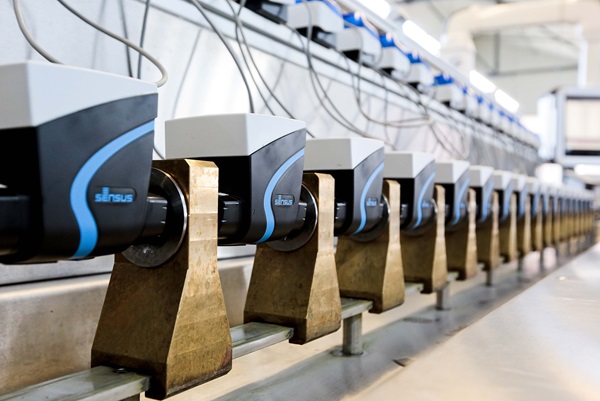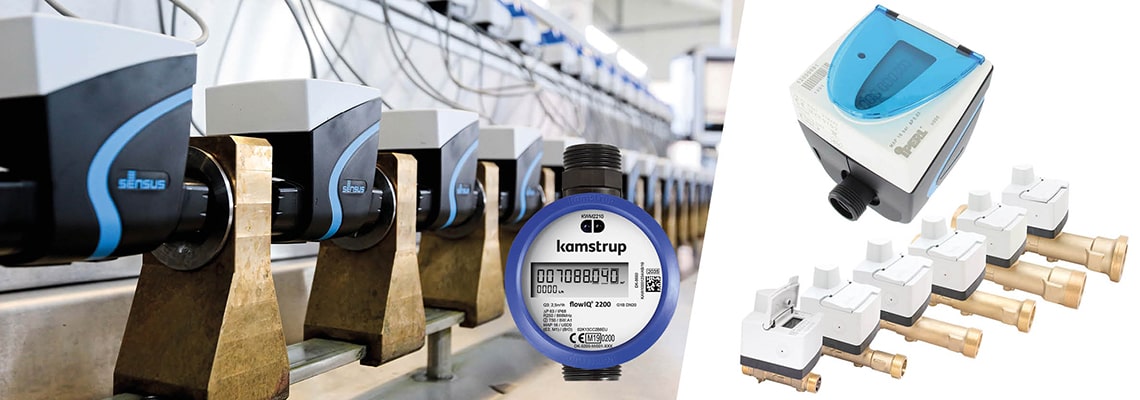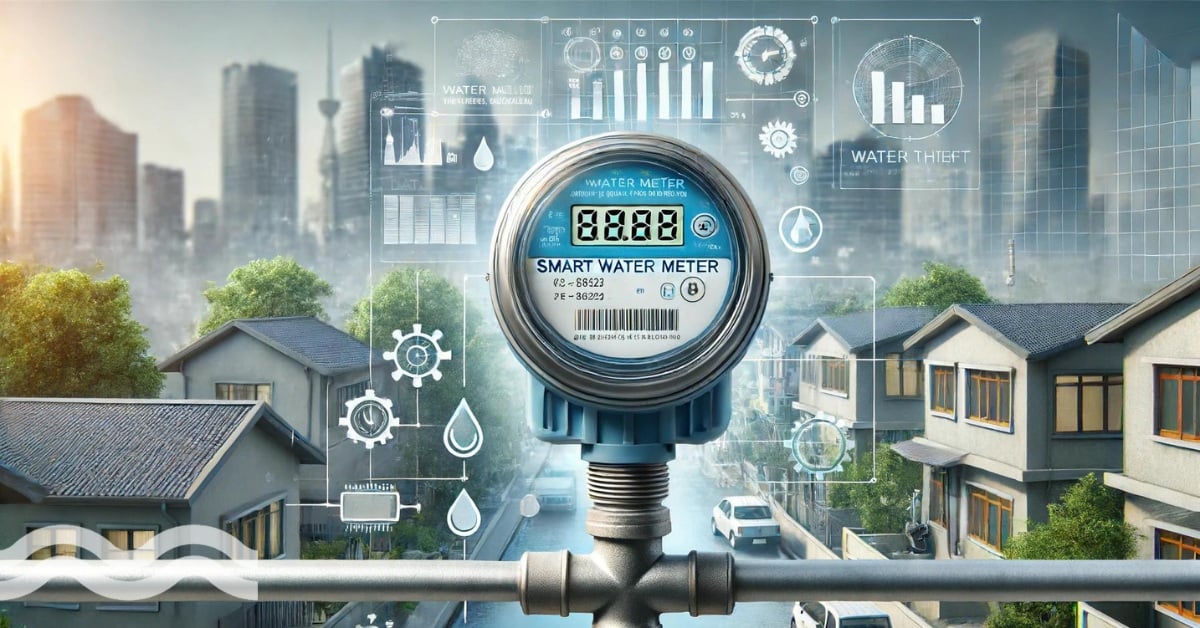TECH DIVE: Why smart water meters are getting smarter
Smart water meter market size and drivers
In a market poised for growth to $5.12 billion by 2026, smart water metering companies are addressing how existing technologies can be tweaked, improved and advanced to stand out in a competitive market.
Traditional drivers for smart water meters have included resource optimisation, as well as enhanced water conservation and reduction of non-revenue water (NRW).
By giving customers more data, in theory, it should reduce how much water they use. Metered customers on average use 12 per cent less, according to UK utility Thames Water, who is fitting meters as part of a wider plan to help meet an expected shortfall of 130 million litres per day in London by 2025.
In terms of market size, in 2017 the market shipped 13.8 million units, according to industry analysts Frost & Sullivan. This is expected to grow to 82.1 million by 2026.
China and North America account for the largest market share, with the latter taking 44 per cent of the smart water meter market, respectively.
In China, rapid urbanisation, smart city investments, favourable policies and the 13th five-year plan has positively impacted the growth potential of the market.
In the US, there is huge demand for smart water metering due to the renewed focus on the reduction of NRW by the utilities. The added advantages of smart billing and leak detection have spurred the installation of smart water meters.
Meanwhile, in Europe, France, Germany and the UK are the biggest markets, followed by Spain and Scandinavia. Water utilities in these countries are heavily investing in the replacement of old meters with smart meters and implementing IoT-based infrastructure.
Tech developments: a “smart water meter with ears”
Danish company Kamstrup sees non-revenue water as one of the central challenges driving innovation, with many utilities locating leaks like “finding a needle in a haystack due to limited knowledge”.
Investigating further, the company and third-party agency conducted a survey among 37 utilities in Northern Europe, finding that 31 per cent of the water loss comes from leaks in service connections and 36 per cent from leaks on distribution mains.
Driven by this data and utility feedback, the company developed a new system that combines smart metering and acoustic leak detection technologies.
Called the flowIQ 2200, Kamstrup is calling it a “smart water meter with ears”. The creative launch video, more akin to a high-end German sportscar launch than water technology, can be seen below:
Text
The flowIQ 2200 and accompanying analytics software were developed in conjunction with two water utilities who provided “access to pipes with actual leaks”.
Seven utilities in both Denmark and Sweden also participated in a field test of 1400 meters in total from September 2018 to June 2018, which identified a total of 13 leakages.
This enabled the company to test the prototypes to help “create a better understanding of the sound patterns created by a natural leak compared to those of a faked leak, or other sources of acoustic noise”, according to Per Trøjbo, senior vice president, water division, Kamstrup.
Pinpointing water leaks
Effectively bridging two technologies – metering and leak detection – it raises the question of whether the hybrid acoustic technology stands up against separate acoustic leak detection?
“The acoustic leak detection in our smart water meters should not be seen as a substitute for the traditional separate acoustic technologies,” adds Trøjbo. “We rather see it as a supplement and a solution that allows utilities to target their use of the existing acoustic technologies.”
The idea is that the new solution decreases the area where manual acoustic leak detection is needed by “pinpointing exact installations where there is an increased risk of a leakage”. Existing solutions will still be needed to pinpoint the leak to within a few centimetres.

Kamstrup believes that a series of the flowIQ 2200 smart meters will act as beacons, lighting up the distribution network to help provide more of an overview.
“Integrating the acoustic leak detection into the meter means that you get a continuous overview of high-risk installations and the overall condition of the network….combining the two is all about enabling a much more targeted effort.”
Moving to ultrasonic technologies
Across the Atlantic, US energy and water technology company Itron said it is investing to move away from mechanical meters equipped with smart radio devices to static ultrasonic technologies with radio integrated.
Like Kamstrup, the company believes the evolution of smart water meters that feature intelligence and embedded sensors will result in a reduction in the “number of smart devices installed in the network”.
The company’s Intelis static water meter range is available from DN15 to DN200mm for the international market.
“The benefit for the water industry includes improved metering accuracy and reliability, compactness and robustness as well as more available data such as air detection and water temperature measurement,” says Corrado Casorzo, director of product management for water devices, Itron.

Communication from the Intelis range includes integrated radio technology for mobile or fixed network collection systems (AMR). The company says the highly accurate measurement of consumption aids leak and air detection.
Despite technology advancements, Casorzo does not believe smart meters will move into water quality monitoring.
As well as a lack of regulatory drivers to measure water quality at every end-user distribution point, he says this would also affect the meter life expectancy.
“Water quality sensors work based on a chemical reaction principle and require more frequent maintenance and replacement, which is not compatible with the longer lifecycle of a water meter,” adds the director of product management. “It is for this reason that I do not see the integration of a water quality sensor into the meter as an effective technical solution.
Long range (LoRa) and narrowband (NB) IoT
Others believe it is how smart meters communicate data that will also change.
“The communication module of the smart water meter has undergone rapid technological transformations,” says Paul Hudson, industry analyst for sustainability and water at Frost & Sullivan (F&S).
Low power wide area network (LPWAN) communication technologies like long-range (LoRa) and narrowband (NB) IoT are being explored and adopted for their efficiency and enhanced battery life, he says.
Telecommunication companies are also seeing the opportunity in water. Huawei has pioneered the implementation of NB-IoT communication module for smart water metering.
Meanwhile, Vodafone is leading the implementation of NB-IoT communication network for smart metering across Europe.
One example is a trial at UK water utility, South East Water, that is bringing together nine companies as part of an ambitious multi-stakeholder collaboration.
Moving beyond the smart water meter
If traditional water meters can be seen to monitor consumption to help make billing more accurate, then truly 'smart' water meters are "monitoring beyond the meter", as Sensus, a Xylem brand, refers to it, to address parameters including pressure, leakage and even quality.
The company believes that by speeding up leak detection using smart meters, it enables water utilities to improve their customer service.
"What is typically interesting is the leak on the other side of the meter that causes consumers to have high bills and negative public sentiment towards the utility," says Travis Smith, director, smart water strategy at Sensus.

"Data gives consumers the ability to take action, so they are more in control," he adds.
The company references a case study from the City of Safford in Arizona where it supplied its iPERL residential water meters, together with two-way FlexNet communication system.
The ambition was to give the city authorities “near real-time data” that can be used to alert customers to any potential issues.
Results included a reduction in the time it took to inform customers on leaks: from 30-40 days down to "a couple of days…even a couple of hours". Furthermore, annual leak adjustment costs due to undetected leaks were reduced by 40 per cent based on the new data being generated.
The third major result was the City of Safford reducing its field budget traditionally spent on sending out in trucks to read meters. The Advanced Metering Infrastructure (AMI) and remote monitoring led to $8000 a year reduction.
Dan Pinney, VP of global water marketing, adds: “When you have the data, certainly the utility can make use of it but if you allow the customer to access their data, they are more in control, so they are not surprised by that monthly/bi-monthly bill when it arrives. They can see what’s going on and take action.”
Improving smart water battery life
One of the key drivers to move from mechanical to magnetic solid-state water meters is the improved lifelong accuracy: solid-state smart meters do not have any moving parts in direct contact with the water flow.
"Any mechanical system is going to wear with time," says Smith. "Even cpotable water quality and quantity varies greatly depending on where you are, and these factors greatly affect how mechanical meters perform over time."
The iPERL is a solid-state smart water with a low-flow measurement of 1 litre per hour. It’s programmable to provide “highly granular data at 15-minute intervals”.

Depending on the application, Sensus estimates an operational life of 20 years for the North American market, and 15 years across Europe.
Battery life is one area the company is continually looking to improve. "One of our prime focuses is battery testing and validation to understanding the key factors that make a long-life system,” adds Pinney.
Related content
Share your water technology stories with us
Do you have an innovation, research results or an other interesting topic you would like to share with the international water technology industry? The Aquatech website and social media channels are a great platform to showcase your stories!
Please contact our Sr Brand Marketing Manager Annelie Koomen.
Are you an Aquatech exhibitor?
Make sure you add your latest press releases to your Company Profile in the Exhibitor Portal for free exposure.
We promise never to send you spam and you can unsubscribe at any time!

.jpg?h=628&iar=0&w=1200)

.jpg?h=628&iar=0&w=1200)